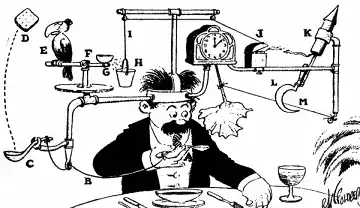Strategy
I would like to apply rational decision theory to the analysis, because that is one well-established way to attain rigor in solving a statistical decision problem. In trying to do so, one difficulty emerges as special: the alteration of SB’s consciousness.
Rational decision theory has no mechanism to handle altered mental states.
In asking SB for her credence in the coin flip, we are simultaneously treating her in a somewhat self-referential manner both as subject (of the SB experiment) and experimenter (concerning the coin flip).
Let’s alter the experiment in an inessential way: instead of administering the memory-erasure drug, prepare a stable of Sleeping Beauty clones just before the experiment begins. (This is the key idea, because it helps us resist distracting--but ultimately irrelevant and misleading--philosophical issues.)
The clones are like her in all respects, including memory and thought.
SB is fully aware this will happen.

We can clone, in principle. E. T. Jaynes replaces the question "how can we build a mathematical model of human common sense"--something we need in order to think through the Sleeping Beauty problem--by "How could we build a machine which would carry out useful plausible reasoning, following clearly defined principles expressing an idealized common sense?" Thus, if you like, replace SB by Jaynes' thinking robot, and clone that.
(There have been, and still are, controversies about "thinking" machines.
"They will never make a machine to replace the human mind—it does many things which no machine could ever do."
You insist that there is something a machine cannot do. If you will tell me precisely what it is that a machine cannot do, then I can always make a machine which will do just that!”
--J. von Neumann, 1948. Quoted by E. T. Jaynes in Probability Theory: The Logic of Science, p. 4.)

--Rube Goldberg
The Sleeping Beauty experiment restated
Prepare $n \ge 2$ identical copies of SB (including SB herself) on Sunday evening. They all go to sleep at the same time, potentially for 100 years. Whenever you need to awaken SB during the experiment, randomly select a clone who has not yet been awakened. Any awakenings will occur on Monday and, if needed, on Tuesday.
I claim that this version of the experiment creates exactly the same set of possible results, right down to SB's mental states and awareness, with exactly the same probabilities. This potentially is one key point where philosophers might choose to attack my solution. I claim it's the last point at which they can attack it, because the remaining analysis is routine and rigorous.
Now we apply the usual statistical machinery. Let's begin with the sample space (of possible experimental outcomes). Let $M$ mean "awakens Monday" and $T$ mean "awakens Tuesday." Similarly, let $h$ mean "heads" and "t" mean tails. Subscript the clones with integers $1, 2, \ldots, n$. Then the possible experimental outcomes can be written (in what I hope is a transparent, self-evident notation) as the set
$$\eqalign{
\{&hM_1, hM_2, \ldots, hM_n, \\
&(tM_1, tT_2), (tM_1, tT_3), \ldots, (tM_1, tT_n), \\
&(tM_2, tT_1), (tM_2, tT_3), \ldots, (tM_2, tT_n), \\
&\cdots, \\
&(tM_n, tT_1), (tM_n, tT_2), \ldots, (tM_n, tT_{n-1}) & \}.
}$$
Monday probabilities
As one of the SB clones, you figure your chance of being awakened on Monday during a heads-up experiment is ($1/2$ chance of heads) times ($1/n$ chance I’m picked to be the clone who is awakened). In more technical terms:
The set of heads outcomes is $h = \{hM_j, j=1,2, \ldots,n\}$. There are $n$ of them.
The event where you are awakened with heads is $h(i) = \{hM_i\}$.
The chance of any particular SB clone $i$ being awakened with the coin showing heads equals $$\Pr[h(i)] = \Pr[h] \times \Pr[h(i)|h] = \frac{1}{2} \times
\frac{1}{n} = \frac{1}{2n}.$$
Tuesday probabilities
The set of tails outcomes is $t = \{(tM_j, tT_k): j \ne k\}$. There are $n(n-1)$ of them. All are equally likely, by design.
You, clone $i$, are awakened in $(n-1) + (n-1) = 2(n-1)$ of these cases; namely, the $n-1$ ways you can be awakened on Monday (there are $n-1$ remaining clones to be awakened Tuesday) plus the $n-1$ ways you can be awakened on Tuesday (there are $n-1$ possible Monday clones). Call this event $t(i)$.
Your chance of being awakened during a tails-up experiment equals $$\Pr[t(i)] = \Pr[t] \times P[t(i)|t] = \frac{1}{2} \times \frac{2(n-1}{n(n-1)} = \frac{1}{n}.$$

Bayes' Theorem
Now that we have come this far, Bayes' Theorem--a mathematical tautology beyond dispute--finishes the work. Any clone's chance of heads is therefore $$\Pr[h | t(i) \cup h(i)] = \frac{\Pr[h]\Pr[h(i)|h]}{\Pr[h]\Pr[h(i)|h] + \Pr[t]\Pr[t(i)|t]} = \frac{1/(2n)}{1/n + 1/(2n)} = \frac{1}{3}.$$
Because SB is indistinguishable from her clones--even to herself!--this is the answer she should give when asked for her degree of belief in heads.
Interpretations
The question "what is the probability of heads" has two reasonable interpretations for this experiment: it can ask for the chance a fair coin lands heads, which is $\Pr[h] = 1/2$ (the Halfer answer), or it can ask for the chance the coin lands heads, conditioned on the fact that you were the clone awakened. This is $\Pr[h|t(i) \cup h(i)] = 1/3$ (the Thirder answer).
In the situation in which SB (or rather any one of a set of identically prepared Jaynes thinking machines) finds herself, this analysis--which many others have performed (but I think less convincingly, because they did not so clearly remove the philosophical distractions in the experimental descriptions)--supports the Thirder answer.
The Halfer answer is correct, but uninteresting, because it is not relevant to the situation in which SB finds herself. This resolves the paradox.
This solution is developed within the context of a single well-defined experimental setup. Clarifying the experiment clarifies the question. A clear question leads to a clear answer.
Comments
I guess that, following Elga (2000), you could legitimately characterize our conditional answer as "count[ing] your own temporal location as relevant to the truth of h," but that characterization adds no insight to the problem: it only detracts from the mathematical facts in evidence. To me it appears to be just an obscure way of asserting that the "clones" interpretation of the probability question is the correct one.
This analysis suggests that the underlying philosophical issue is one of identity: What happens to the clones who are not awakened? What cognitive and noetic relationships hold among the clones?--but that discussion is not a matter of statistical analysis; it belongs on a different forum.



